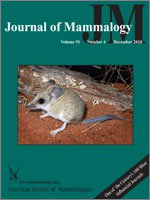The unprecedented rate of urbanization over the past several decades is a major concern for conservation globally and has given rise to the multidisciplinary field of urban ecology. This field explores the direct and indirect effects of human activities on food-web dynamics, community structure, and animal behavior in highly modified urban ecosystems. Urban ecosystems are typically characterized by reduced species diversity but increased abundance of a few species able to exploit anthropogenic food sources. For many urban mammalian and avian species direct resource subsidization is difficult to assess using traditional means such as scat analysis. Here we show how stable isotope analysis can be used to assess the exploitation of anthropogenic foods in an endangered carnivore, the San Joaquin kit fox (Vulpes macrotis mutica) inhabiting the southern San Joaquin Valley in California. Examination of carbon (δ13C) and nitrogen (δ15N) isotope data shows that kit foxes living in urban Bakersfield, California, extensively exploit anthropogenic foods, which sharply contrasts with dietary data derived from scat analysis. Urban kit foxes had significantly higher δ13C and lower δ15N values than foxes from adjacent nonurban areas and had similar isotope values as Bakersfield human residents, which suggests a shared food source. In contrast, examination of isotopic data for nonurban kit foxes shows that they largely consume the most abundant natural prey species found in their scats. Stable isotope analysis offers a rapid and cost-effective means of evaluating the degree to which urban wildlife populations exploit anthropogenic foods in areas where native C4 vegetation is relatively uncommon or absent, important in assessing the direct impacts of human activities on food-web dynamics in urban ecosystems. We anticipate that the isotopic gradients used here will be useful in assessing the exploitation of anthropogenic foods in other urban wildlife populations.
How to translate text using browser tools
16 December 2010
Stable isotopes evaluate exploitation of anthropogenic foods by the endangered San Joaquin kit fox (Vulpes macrotis mutica)
Seth D. Newsome,
Katherine Ralls,
Christine Van Horn Job,
Marilyn L. Fogel,
Brian L. Cypher

Journal of Mammalogy
Vol. 91 • No. 6
December 2010
Vol. 91 • No. 6
December 2010
anthropogenic subsidies
diet
stable isotopes
urban ecology
Vulpes macrotis




